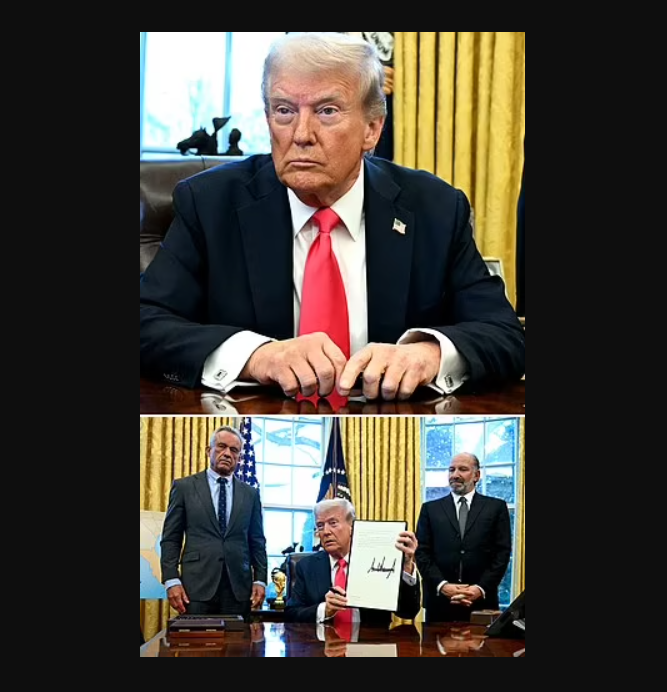
President Donald Trump has signed an executive order aiming to make healthcare costs more transparent for patients.
The ruling directs regulators to force healthcare providers and insurers to publicly disclose their prices, the idea being to make it easier for consumers to shop around for better deals.
The move marks a more aggressive approach to boost compliance with regulations Trump introduced in 2019, which providers have only half-heartedly been following.
Trump has long advocated for insurers to tell consumers up front the actual prices for common tests and procedures, believing it will drive down costs.
Healthcare prices have traditionally been veiled in secrecy, determined through private negotiations among doctors, hospitals, pharmaceutical companies, and insurers.
Those involved have fiercely guarded these figures, arguing confidentiality is essential to the bargaining process.
Insurance industry groups have argued regulations would have the opposite effect on costs and actually raise premiums.
Hospital groups claimed during Trump’s last presidency that declaring prices for every item and service they offer violated their First Amendment rights.
They claimed the policy would strip them of negotiating power to haggle prices with insurers. Despite the backlash he faced in the past, Trump pushed through with the order.
Trump’s first-term order for more price disclosure had limited success, with just 14 percent of hospitals were fully adhering to rules to publicly post their prices in 2022.
The move comes less than a week after he signed another order meant to expand access to and reduce costs of in vitro fertilization.
At the same time, he issued a presidential memorandum calling for ‘radical transparency requirements’ from the government, which he suggested could reduce wasteful spending.
On the campaign trail, Trump called for universal coverage of IVF treatment after his Supreme Court nominees helped to overturn Roe v. Wade, leading to a wave of restrictions in Republican-led states, including some that have threatened access to IVF by trying to define life as beginning at conception.
In anticipation of questions about his administration’s efforts to slash federal spending, the president said he wrote down examples of government programs around the world which he then listed off at length.
He said he thinks ‘women and families, husbands, are very appreciative’ of his executive order on IVF, which offers a possible solution when a woman has trouble getting pregnant.
The procedure involves retrieving her eggs and combining them in a lab dish with a man’s sperm to create a fertilized embryo, which is then transferred into the woman’s uterus in an attempt to create a pregnancy.
IVF is done in cycles, and more than one may be required.
Barbara Collura, president and CEO of Resolve: The National Infertility Association, said that what the White House put out ‘looks extremely promising.’
‘The biggest barriers for people to building their families are the out-of-pocket costs, the lack of insurance coverage for this care,’ she said.
Illinois Sen. Tammy Duckworth, a Democrat, said: ‘Donald Trump’s executive order does nothing to expand access to IVF. In fact, he’s the reason IVF is at risk in the first place.’
Duckworth said if Trump is going to follow through on his campaign promise to provide free IVF, he can start by supporting her legislation that would require insurance plans to cover IVF.
If Trump’s new health care rules withstand legal review, it’s unclear to what degree patients and their families will become a force reshaping the market.
Patients usually follow the recommendations of their doctors.
And people pick doctors by reputation, by word of mouth or from the lists of physicians who contract with their insurers.
The issue of health care price transparency started attracting more attention under the Obama administration, as then-HHS Secretary Kathleen Sebelius oversaw the disclosure of list prices charged by hospitals.
The Trump administration’s initiative drills down more deeply to try to get at the prices actually paid by insurers.
Many policy experts believe that high prices are a major driver of the nation’s chronic affordability problems with health care, which accounts for about 18 percent of the total economy, significantly burdening families, taxpayers and businesses.



